Northern Lights Potential
WOW! Take a look at the tweet below from @treetanner who is a talented storm chaser and aurora chaser from central Alberta Canada. Theresa snapped this early Sunday morning as northern lights filled the sky.
Northern Lights Potential?
Take a look at the image loop from NOAA's Space Weather Prediction Center below... That brief explosion you see was an explosion from the sun! This "Coronal Mass Ejection" occurred on July 14th and was directed toward the Earth, which means that charged particles could hit Earth on/around July 16th & 17th, which could create a spectacular display of northern lights for northern latitudes over the coming days. NOAA's SWPC has issued a G2 (Moderate) Geomagnetic Storm Watch. Here's an excerpt from SpaceWeather.com regarding the upcoming northern lights potential: "NOAA forecasters say there is a 75% chance of geomagnetic storms on July 16th when a CMEis expected to hit Earth's magnetic field. Moderately strong G2-class storms on July 16th could intensify to strong G3-class storms on July 17th as Earth passes through the CME's magnetized wake. High latitude sky watchers should be alert for auroras in the nights ahead."

Northern Lights Forecast - Sunday Night!
Take a look at the image from NOAA's SWPC OVATION model, which suggests that there may be a pretty good chance of seeing northern lights across the northern tier of the nation Sunday night/early Monday morning. The Kp (Planetary K-Index) may peak around a 5 or 6, which means that the storm may be intense enough for the northern lights to be seen close to home! There may even be another chance of northern lights on Monday night/early Tuesday morning!
_________________________________________________________
"Rare Santiago snowfall leaves 280,000 without power"
"The first snowfall in Chile's capital for around a decade has created spectacular views across the city. However, one person died from a heart attack while clearing snow and there has been major power disruption."
"June 2017 was fourth-warmest on record"
"June 2017 was the fourth warmest June in 137 years of modern record-keeping, according to a monthly analysis of global temperatures by scientists at NASA's Goddard Institute for Space Studies (GISS) in New York. Last month was 0.69 degrees Celsius warmer than the mean June temperature from 1951-1980. It is surpassed by June 2016 (+0.79 °C) and June 2015 and 1998 (+0.78 °C) and only insignificantly warmer than June 2005 (+0.68 °C). Except for June 1998, the 10 warmest months of June occurred between 2005 and 2017."
 ____________________________________________________________
____________________________________________________________
"After 2000-era plateau, global methane levels hitting new highs"
"When it comes to global warming, carbon dioxide is the 800-pound gorilla: it’s the most abundant of the long-lived greenhouse gases that human activities generate. But ounce for ounce, methane (CH4) traps more heat, and it accounts for about 20% of the greenhouse gases produced by human activities. Strangely, though, global methane levels “flat lined” from 1999 to 2006. The plateau didn’t last, however, and in recent years, global methane levels have been hitting new highs. Figuring out what’s going on with methane is a high priority for carbon cycle experts at NOAA and other institutions around the world. Possibly the most important clue: air samples collected at different latitudes around the world show that the amount of methane carrying carbon-13—a rare, heavy isotope of carbon—has dropped significantly since 2007. That drop casts doubt on one of the first explanations experts considered for the post-2007 rise: an increase in methane emitted from fossil fuels, including "fugitive" methane gas escaping during oil and natural gas drilling. Instead, the chemical fingerprints point toward agricultural and wetland emissions from the tropics."
(Monthly methane concentrations (small circles) since 1983, with the running average as a solid line. NOAA Climate.gov graph, based on data from NOAA ESRL.)
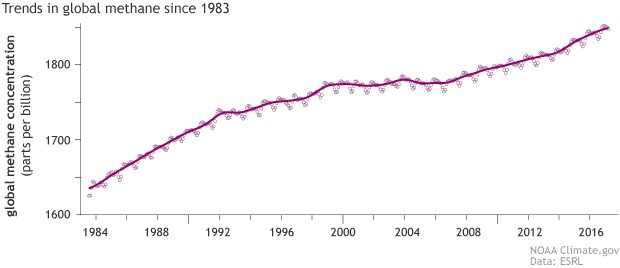
Severe Threat Monday & Tuesday
.png)
.png)
Simulated Radar
The simulated radar through midday Monday to midday Wednesday, which shows a fairly active start to the week. It appears the first round of potentially strong to severe storms with locally heavy rainfall would arrive late Monday and into the overnight hours, while the second round looks to continue on Tuesday and into the overnight hours once again.
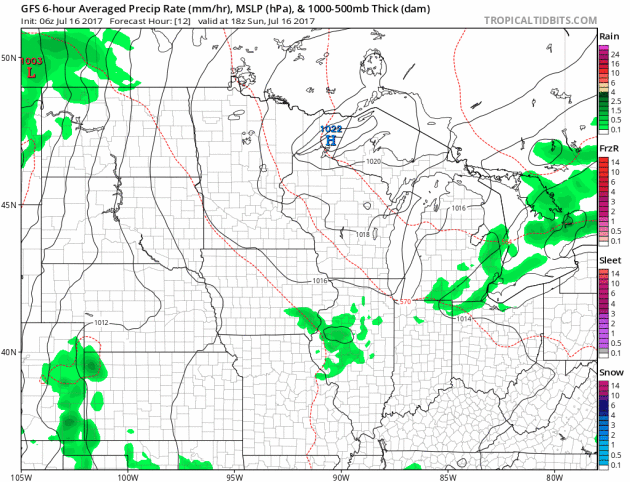
The rainfall forecast through the end of next week suggests some heavy rainfall potential moving in. Look at how widespread the 1"+ rainfall amounts are across the state! This would certainly be welcomed by many as the last few days have been pretty dry. You're lawns and gardens would be appreciative.

Mostly Humid Week Ahead
Here's the expected dewpoint across the region on Monday and Tuesday, which shows elevated dewpoints across the region. After a quick break in the humid weather on Sunday, most of us will be dealing with the sticky stuff again for much of the week.
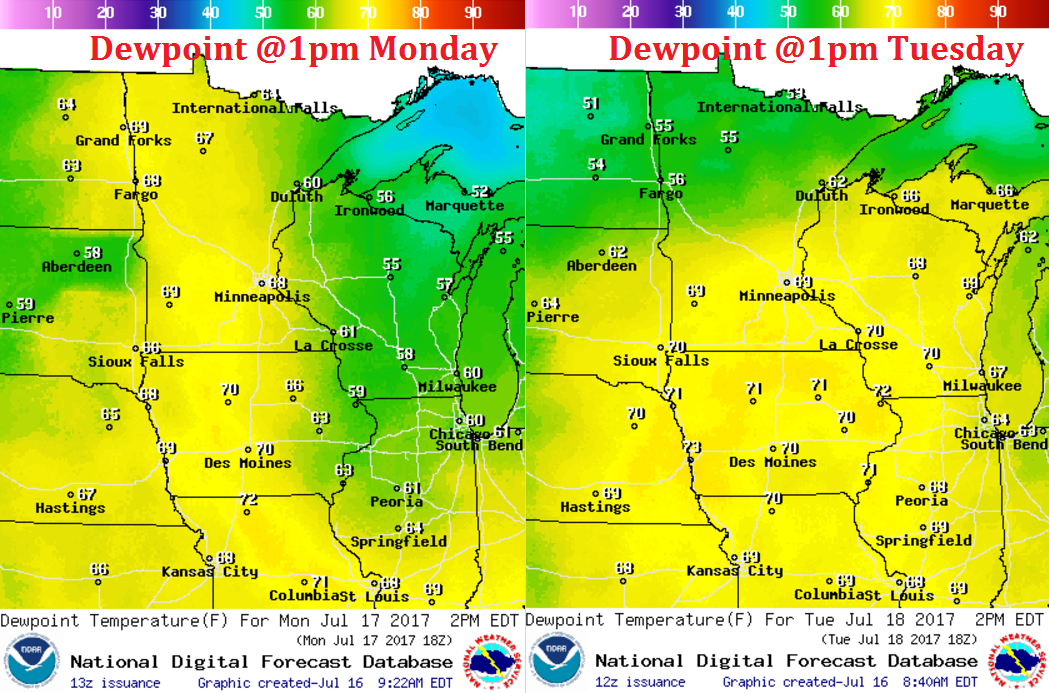
___________________________________________________________________________
FERNANDA in the Eastern Pacific
The National Hurricane Center continues to track FERNANDA, which as of late Sunday was a category 3 hurricane with sustained winds of 125mph. FERNANDA is the 6th named storm of the 2017 Eastern Pacific Hurricane Season and the 3rd hurricane of the season behind DORA & EUGENE, but is the first major hurricane of the season. The IR satellite loop below shows a well-defined "eye", indicating the intensity of this particular system.
.gif)
Here's the official track for FERNANDA, which has it staying a major hurricane through early next week. The good news is that the forecast track has it continuing to drift west away from any major landmass.

Here's an interesting image. This is the forecast from a number of different models regarding the potential strength of FERNANDA over time. Note that some models keep this storm as a category 3 hurricane through early next week before diminishing into a weaker hurricane or tropical storm by late next week.
.png)
Eastern Pacific Outlook: Next 5 Days
Weather conditions in the Eastern Pacific continue to remain active as NOAA's NHC is keeping an eye on three other waves of energy east of FERNANDA one has a HIGH chance of tropical development over the next 5 days, while the other two have a medium and low chance. Stay tuned...
.png)
Atlantic Outlook: Next 5 Days
.png)
2017 Lightning Fatalities
According to NOAA's NWS, there have been 6 lightning fatalities so far this year. Note that 4 of those deaths have occurred in Florida, which is considered to be the lightning capital of the United States.
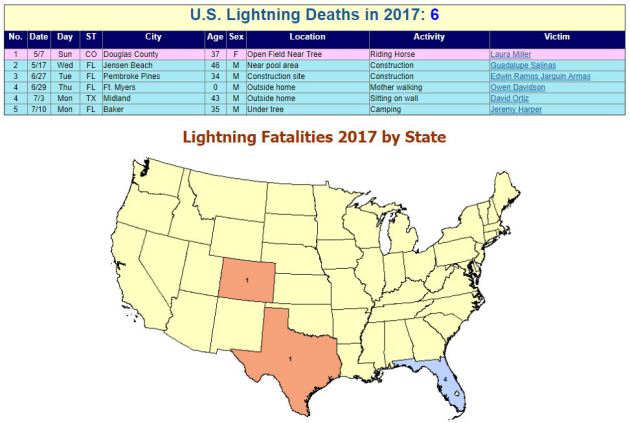
According to NOAA's NWS, lightning kills an average of 47 people each year in United States! Over the last 10 years, 310 people have died from lightning and what is interesting is that nearly 79% have been males!
.png) Lightning Safety: Myths & Facts
Did you know that lightning is nearly 5 times hotter than the surface of the sun? Here are a few interesting myths and facts from NOAA's NWS regarding lightning:
Lightning Safety: Myths & Facts
Did you know that lightning is nearly 5 times hotter than the surface of the sun? Here are a few interesting myths and facts from NOAA's NWS regarding lightning:
Myth: If you're caught outside during a thunderstorm, you should crouch down to reduce your risk of being struck.
Fact: Crouching doesn't make you any safer outdoors. Run to a substantial building or hard topped vehicle. If you are too far to run to one of these options, you have no good alternative. You are NOT safe anywhere outdoors. See our safety page for tips that may slightly reduce your risk.
Myth: Lightning never strikes the same place twice.
Fact: Lightning often strikes the same place repeatedly, especially if it's a tall, pointy, isolated object. The Empire State Building is hit an average of 23 times a year
Myth: If it’s not raining or there aren’t clouds overhead, you’re safe from lightning.
Fact: Lightning often strikes more than three miles from the center of the thunderstorm, far outside the rain or thunderstorm cloud. “Bolts from the blue” can strike 10-15 miles from the thunderstorm.
Myth: Rubber tires on a car protect you from lightning by insulating you from the ground.
Fact: Most cars are safe from lightning, but it is the metal roof and metal sides that protect you, NOT the rubber tires. Remember, convertibles, motorcycles, bicycles, open-shelled outdoor recreational vehicles and cars with fiberglass shells offer no protection from lightning. When lightning strikes a vehicle, it goes through the metal frame into the ground. Don't lean on doors during a thunderstorm.
Myth: A lightning victim is electrified. If you touch them, you’ll be electrocuted.
Fact: The human body does not store electricity. It is perfectly safe to touch a lightning victim to give them first aid. This is the most chilling of lightning Myths. Imagine if someone died because people were afraid to give CPR!
Myth: If outside in a thunderstorm, you should seek shelter under a tree to stay dry.
Fact: Being underneath a tree is the second leading cause of lightning casualties. Better to get wet than fried!
See more on lightning including safety tips HERE:
 ___________________________________________________________________________
___________________________________________________________________________
National Weather Hazards Ahead...
According to NOAA's NWS, there have been 6 lightning fatalities so far this year. Note that 4 of those deaths have occurred in Florida, which is considered to be the lightning capital of the United States.
Lightning Deaths Over the Last 10 Years
.png)
Myth: If you're caught outside during a thunderstorm, you should crouch down to reduce your risk of being struck.
Fact: Crouching doesn't make you any safer outdoors. Run to a substantial building or hard topped vehicle. If you are too far to run to one of these options, you have no good alternative. You are NOT safe anywhere outdoors. See our safety page for tips that may slightly reduce your risk.
Myth: Lightning never strikes the same place twice.
Fact: Lightning often strikes the same place repeatedly, especially if it's a tall, pointy, isolated object. The Empire State Building is hit an average of 23 times a year
Myth: If it’s not raining or there aren’t clouds overhead, you’re safe from lightning.
Fact: Lightning often strikes more than three miles from the center of the thunderstorm, far outside the rain or thunderstorm cloud. “Bolts from the blue” can strike 10-15 miles from the thunderstorm.
Myth: Rubber tires on a car protect you from lightning by insulating you from the ground.
Fact: Most cars are safe from lightning, but it is the metal roof and metal sides that protect you, NOT the rubber tires. Remember, convertibles, motorcycles, bicycles, open-shelled outdoor recreational vehicles and cars with fiberglass shells offer no protection from lightning. When lightning strikes a vehicle, it goes through the metal frame into the ground. Don't lean on doors during a thunderstorm.
Myth: A lightning victim is electrified. If you touch them, you’ll be electrocuted.
Fact: The human body does not store electricity. It is perfectly safe to touch a lightning victim to give them first aid. This is the most chilling of lightning Myths. Imagine if someone died because people were afraid to give CPR!
Myth: If outside in a thunderstorm, you should seek shelter under a tree to stay dry.
Fact: Being underneath a tree is the second leading cause of lightning casualties. Better to get wet than fried!
See more on lightning including safety tips HERE:
PRELIMINARY 2017 Tornado Map
It certainly has been a fairly active first half of 2017 with 1162 preliminary tornado reports through July 13th. Note that this is the most tornadoes through July 11th since 2011, when there were nearly 1,600 reports. The map below shows the distribution of the tornadoes so far this year.
.gif) PRELIMINARY 2017 Tornado Count
PRELIMINARY 2017 Tornado Count
According to NOAA's SPC, the PRELIMINARY 2017 tornado count is 1174 (through July 15). Note that is the most active year for tornadoes since 2011, when there were 1,631 tornadoes. Keep in mind there was a major tornado outbreak in the Gulf Coast region from April 25-28, 2011 that spawned nearly 500 tornadoes, some of which were deadly. That outbreak is known as the Super Outbreak of 2011 and has gone down in history as one of the biggest, costliest and one of the deadliest tornado outbreaks in history.
.png)
____________________________________________________________
.gif)
According to NOAA's SPC, the PRELIMINARY 2017 tornado count is 1174 (through July 15). Note that is the most active year for tornadoes since 2011, when there were 1,631 tornadoes. Keep in mind there was a major tornado outbreak in the Gulf Coast region from April 25-28, 2011 that spawned nearly 500 tornadoes, some of which were deadly. That outbreak is known as the Super Outbreak of 2011 and has gone down in history as one of the biggest, costliest and one of the deadliest tornado outbreaks in history.
.png)
____________________________________________________________
2.) Flooding possible across portions of the Southern Rockies, the Central Rockies, the Central Great Basin, and the Southwest.
3.) Flooding occurring or imminent across portions of the Middle Mississippi Valley, the Great Lakes, and the Ohio Valley.
4.) Flooding possible across portions of the Central Rockies, the Central Great Basin, and the Southwest.
5.) Excessive heat across portions of the Central Plains, the Northern Plains, the Tennessee Valley, the Mississippi Valley, the Great Lakes, and the Ohio Valley, Tue-Thu, Jul 18-Jul 20.
6.) Excessive heat across portions of the Southeast and the Mid-Atlantic, Thu-Fri, Jul 20-Jul 21.
7.) Much above normal temperatures across portions of the Central Plains, the Middle Mississippi Valley, the Upper Mississippi Valley, and the Northern Plains, Mon, Jul 17.
8.) Heavy rain across portions of mainland Alaska, Tue-Wed, Jul 18-Jul 19.
9.) Slight risk of much above normal temperatures for portions of the Central Great Basin, the Northern Plains, the Southern Plains, the Northern Rockies, California, the Northern Great Basin, and the Pacific Northwest, Wed-Fri, Jul 26-Jul 28.
10.) Slight risk of much above normal temperatures for portions of the Central Plains, the Northern Plains, the Middle Mississippi Valley, the Upper Mississippi Valley, the Great Lakes, and the Ohio Valley, Sat, Jul 22.
11.) Slight risk of much above normal temperatures for portions of the Southeast, Tue-Fri, Jul 25-Jul 28.
12.) Severe Drought across Hawaii, the Northern Plains, Southeastern California, and Southwestern Arizona.
.png)
_________________________________________________________
"Drought in High Plains the worst some farmers have ever seen"
"Drought in North Dakota is laying waste to fields of normally bountiful food and hay crops and searing pastures that typically would be home to multitudes of grazing cattle. Some longtime farmers and ranchers say it’s the worst conditions they’ve seen in decades — possibly their lifetimes — and simple survival has become their goal as a dry summer drags on without a raincloud in sight. “We’ve never been in this sort of boat, honestly,” said Dawn Martin, who raises beef cattle with her parents and husband in the southwestern part of the state, an area the U.S. Drought Monitor says is in “extreme” drought. “We’re just trying to make it through and work it out,” she said. “There are a lot of people in the same boat. I don’t know what the answer is.” The drought’s impact likely will be felt not just by farmers but also consumers, state Agriculture Commissioner Doug Goehring said. Agriculture in North Dakota is an $11 billion a year industry, and the state leads the nation in the production of nearly a dozen crops."
(In this July 13, 2017, photo, farmer John Weinand surveys a wheat field near Beulah, N.D., that should be twice as tall as it is. Drought in western North Dakota this summer is laying waste to crops _ some of which won’t even be worth harvesting. (Blake Nicholson/Associated Press))
 ___________________________________________________________________________
___________________________________________________________________________

EXTREME Drought in North Dakota
According to the US Drought Monitor, nearly 36% of the state is considered to be in an EXTREME Drought. This is up from nearly 29% last week. Also, nearly 94% of the state is considered to be either abnormally dry or in some type of drought.
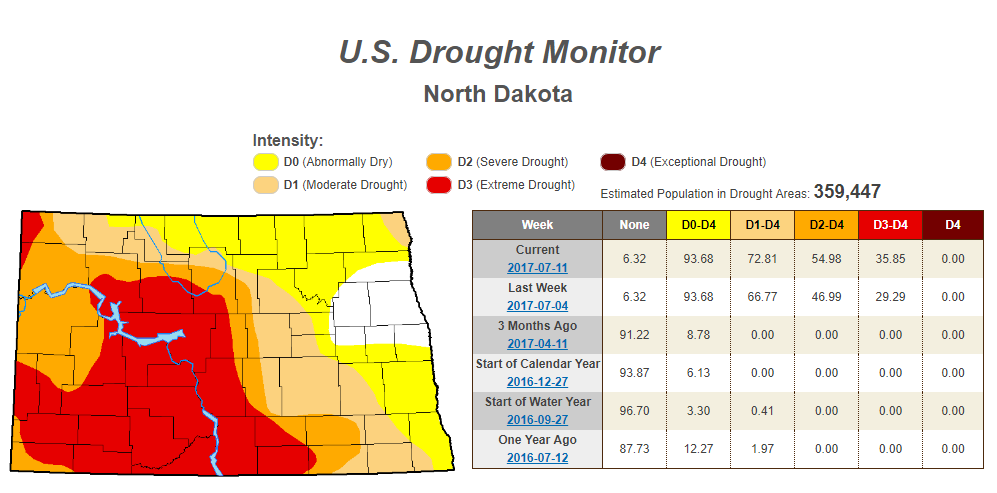
Rain Needed to End Drought
Extreme drought conditions are in place over parts of Montana and North and South Dakota due to several days/week of hot and dry weather. The image below suggests how much rain would be needed to end the drought, which suggests nearly 6" to 12" or more!
US Drought Monitor
According to the US Drought Monitor, drought conditions from July 4h to July 11th worsened slightly across the nation. Note that EXTREME drought conditions (located across parts of Montana and parts of North and South Dakota increased from 1.43% last week to 2.19% this week.

_________________________________________________________________________
National Weather Outlook
Here's the weather outlook through the end of next week, which shows stormier weather starting to develop across the Upper Midwest once again. Some of these storms could be strong to severe with areas of heavy rainfall, which could lead to localized flooding. There will also be a continued monsoon storm threat across the Desert Southwest through the week with the potential of damaging winds, dust storms and localized flooding.
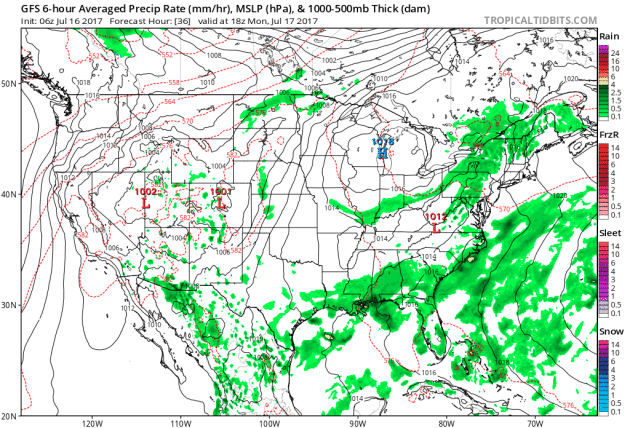
Severe Threats Monday & Tuesday
Here are the severe weather concerns for Monday and Tuesday, which shows the best potential of strong to severe storms parts of northern Minnesota late Monday. There may also be a few strong storms across parts of the Plains, the Northeast and also across southern Arizona. By Tuesday, the isolated severe threat looks to settle in across the Midwest.
Excessive Rainfall Potential Saturday & Sunday
According to NOAA's WPC, there is a risk of excessive rain on Monday in several spots across the country, but the best potential of heavy rain will be across parts of the Northeast and into southern Arizona. On Tuesday, the threat for areas of heavy rain continue across parts of the Midwest and Southwest.
.gif)
.gif)
Localized Heavy Rain Threats
With excessive rainfall potential in place over parts of the Northeast and along the Gulf Coast into the Mid-Atlantic, some spots could see more than 1" to 3"+ of rain over the next 5 days. This heavy rain threat could lead to isolated areas of flooding!
________________________________________________________
Monsoonal Storms
Thanks to Randy Musil for the pictures below, who snapped these pictures Saturday evening as monsoon storms rolled in around the Phoenix, AZ area. These storms produced damaging wind gusts and locally heavy rain.
Monsoonal Storms
WOW! Here's a great picture from @Chris_Manno who is a pilot and who also has an apparent knack for snapping great pictures. This view is from above a monsoon storm north of Tuscon, AZ on Friday. Great picture Chris!

Monsoon Storms Continue
Here's the simulated radar from Monday to Friday, which shows the potential of daily monsoon storms continuing across the region. Note that some of the storms could be a little on the strong side with gusty winds, dust storms and locally heavy rain, which could lead to localized flooding. The 5 day rainfall forecast below suggests that some areas could see up to 1" of rain or more through the end of next week!
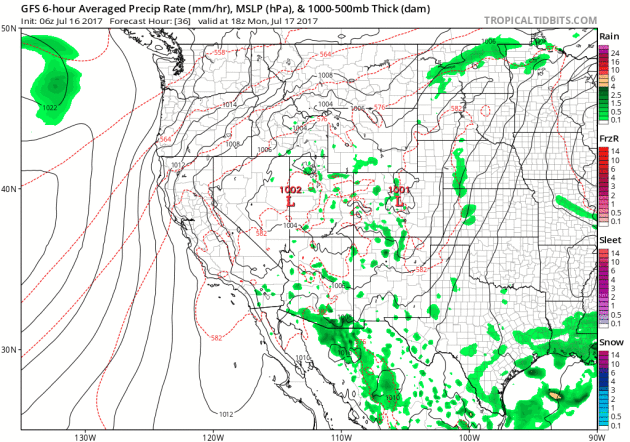
Flash Flood Potential Through PM Monday
The National Weather Service has issued Flash Flood Watches across much of Arizona through PM Monday, where areas of heavy rain from monsoon storms could lead to areas of very heavy rain and flash flooding. Despite flash flood watches only going through PM Monday, the rainfall potential through the end of the week suggests 1" to 2"+ rainfall.
________________________________________________________________________
Whittier Fire - Camp Whittier near Lake Cachuma, Hwy 154 - California
The Whittier Fire at Camp Whittier near Lake Cachuma in California is a big one! Unfortunately, this fire has already consumed 20 structures; 8 homes and 12 outbuildings. The fire started on Saturday, July 8th and has ballooned to 17,364 acres since then. With 1,924 people working on the fire, it is only 36% contained at this point . Hot, dry and strong "Sundowner Winds" will continue to keep this fire threat high.
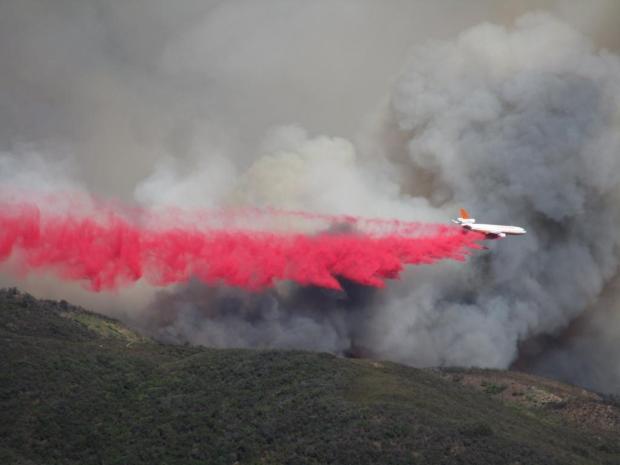

Rooster Comb Fire - Battle Mountain, Nevada
According to Inciweb, one of the largest fires currently burning in the Lower 48 is the Rooster Comb Fire located near Battle Mountain, NV. This particular fire has consumed a whopping 218,380 acres and is 90% contained. This particular fire started on Sunday, July 9th and quickly spread as hot, dry and windy weather created extreme fire behavior. Thunderstorms and erratic winds are still posing a concern for the fire. The good news is that the estimated containment date is projected for Monday, July 17th, while 362 people continue to work on the fire.
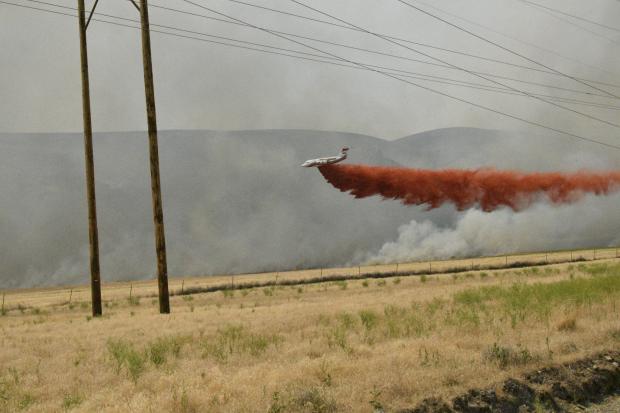
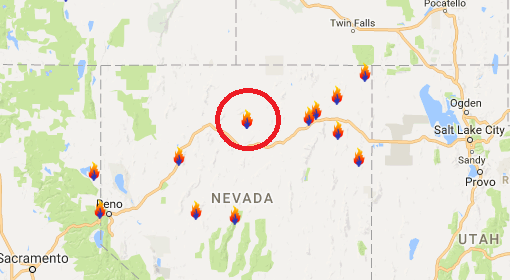
Ongoing Large Wildfires
Here's a look at the current wildfire map across the country. Recent hot and dry weather has helped to spark several wildfires across the Western US, while a few have also been popping up in the Eastern US.
National Smoke Analysis
Here's the projected wildfire smoke concentration for midday Monday, which suggests that smoke from wildfires burning in Canada could continue to linger around the Upper Midwest/Great Lakes region. There also appears a very high concentration of smoke from fires burning across the western half of Canada. If you are in these areas, air quality could be a little poor, but these areas may also be enjoying very interesting looking sunrises/sunsets, which tend to look hazy or reddish-orange.

Fire Weather Concerns Monday
According to NOAA's SPC, the fire threat for Monday remains at ELEVATED and CRITICAL levels across parts of the Western US. Hot, dry and windy conditions could help to fuel erratic wildfire behavior in these areas for any fires currently burning. If any fires get going, the could spread quickly to uncontrollable levels.
________________________________________________________________________
Excessive Heat Concerns
Excessive Heat Watches have been posted for parts of the Central US where heat index values could range from 100F to 110F from Tuesday to Friday.
Hot Week Ahead
Take a look at the extended forecast below for Kansas City and St. Louis, MO below, which shows temperatures nearing 100F over the next several days. This dangerous heat could even hang around into the weekend.
________________________________________________________________________
Atmospheric and Geomagnetic Storms
By Todd Nelson, filling in for DouglasOne of the more unique things about living where we do is that every so often we get a chance to see northern lights. That was the case this weekend as a fairly strong geomagnetic storm was in progress. The source was from a sunspot larger than Earth that has been slowly drifting across the surface of the sun. It recently just burped and sent a mass of charged particles our way that resulted in a brilliant display of swirling auroras overhead. If you've never seen them, put it on your bucket list. You won't regret it!
July has been living up to July standards with a constant barrage of hot and sweaty weather across the state. This week will likely go down has one of the sweatiest weeks of 2017 as temperatures and dewpoints flirt with 90 and 70 degrees respectively.
We're also going to have several swarms of thunderstorms rumbling across the state this week, some of which could be strong to severe with areas of locally heavy rain.
If you like summer, this week won't disappoint. Hot, humid and somewhat stormy; the soupe du jour
________________________________________________________________________
By Todd Nelson, filling in for DouglasOne of the more unique things about living where we do is that every so often we get a chance to see northern lights. That was the case this weekend as a fairly strong geomagnetic storm was in progress. The source was from a sunspot larger than Earth that has been slowly drifting across the surface of the sun. It recently just burped and sent a mass of charged particles our way that resulted in a brilliant display of swirling auroras overhead. If you've never seen them, put it on your bucket list. You won't regret it!
July has been living up to July standards with a constant barrage of hot and sweaty weather across the state. This week will likely go down has one of the sweatiest weeks of 2017 as temperatures and dewpoints flirt with 90 and 70 degrees respectively.
We're also going to have several swarms of thunderstorms rumbling across the state this week, some of which could be strong to severe with areas of locally heavy rain.
If you like summer, this week won't disappoint. Hot, humid and somewhat stormy; the soupe du jour
________________________________________________________________________
Extended Forecast
MONDAY: Hot & sticky again. Storms overnight, mainly north. Winds: S 5-10. High: 88.
MONDAY NIGHT: Chance for thunderstorms with locally heavy rain, mainly north. Winds: S 5-10. Low: 73.
TUESDAY: Unsettled. Heavy rain potential. Winds: NE 5. High: 86.
WEDNESDAY: Stray storm possible. Winds: ESE 5. Wake-up: 68 High: 85.
THURSDAY: Hot and humid. More PM t-storms. Winds: SSE 5. Wake-up: 70. High: 87.
FRIDAY: Lingering AM cloud grumbles. Winds: ENE 5. Wake-up: 70. High: 87.
SATURDAY: Daytime sun. Thunder chance late. Winds: SE 5. Wake-up: 69. High: 85.
SUNDAY: AM shower. More PM sun. Winds: SSW 5. Wake-up: 70. High: 89.
_______________________________________________________
_______________________________________________________
This Day in Weather History
July 17th
July 17th
2001: Lightning struck a Minnesota National Guard field training site located in Camp Ripley. Nearly two dozen Marine Corps reservists were sent to hospitals. Most were released after treatment.
1952: 5.20 inches of rain falls in 3 1/2 hours at Moose Lake. Numerous basements flood, and Highway 61 becomes impassable at Willow River.
1934: Frost damages crops across the north with lows of 34 in Baudette and Roseau.
________________________________________________________
________________________________________________________
Average High/Low for Minneapolis
July 17th
July 17th
Average High: 84F (Record: 99F set in 1936)
Average Low: 64F (Record: 52F set in 1976)
Average Low: 64F (Record: 52F set in 1976)
Record Rainfall: 3.71" set in 1997
_________________________________________________________
_________________________________________________________
Sunrise/Sunset Times for Minneapolis
July 17th
July 17th
Sunrise: 5:43am
Sunset: 8:54pm
Sunset: 8:54pm
Hours of Daylight: 15hours & 12mins
Daylight LOST since yesterday: ~1 minute and 44 seconds
Daylight LOST since summer solstice (June 20th): ~25 minutes
__________________________________________________________
Daylight LOST since summer solstice (June 20th): ~25 minutes
__________________________________________________________
Moon Phase for July 17th at Midnight
1.5 Days After Last Quarter
1.5 Days After Last Quarter
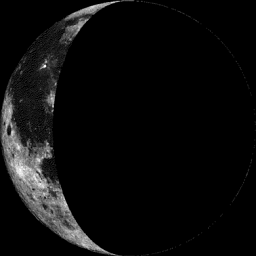
_________________________
Weather Outlook For Monday
Monday will be a very warm and sticky day across the region as highs warm into the 80s and 90s. With dewpoints warming to near 70F for some, heat index values could approach 100F in a few locations once again. Sunny skies will eventually become cloudier later in the day as our next rain/thunder chance moves in overnight.

UV Index for Monday - VERY HIGH
The UV Index will be considered VERY HIGH across much of the state of Minnesota on Monday, which means that it will only 15 to 20 minutes or less to burn unprotected skin. With that said, if you are planning on spending any extended length of time outside, make sure you wear appropriate attire and lather on the sun block!
__________________________________________________________________________
Weather Outlook For Tuesday
Tuesday will a fairly warm and sticky day across the region, but thunderstorms will be an ongoing threat through the early part of the day with the potential of a few strong/severe storms and locally heavy rain developing again late in the day/overnight hours.
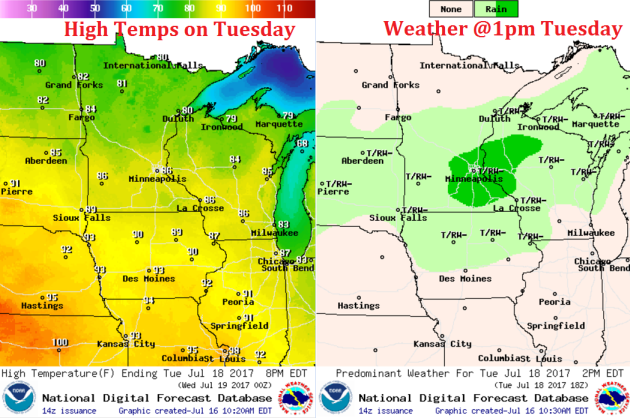
UV Index for Tuesday - VERY HIGH
The UV Index for Tuesday is expected to be VERY HIGH once again, which means that your skin could burn in 15 to 20 minutes or less!
_____________________________________________________________
Minneapolis Temperature Outlook
Here's the temperature outlook through July 30th, which shows temperatures taking a little bit of a dip on Sunday compared to where we were on Saturday, but note that we get another heat spike as we head into next week. The extended forecast as we head into the rest of the month shows temperatures consistently at or above average in the mid/upper 80s.
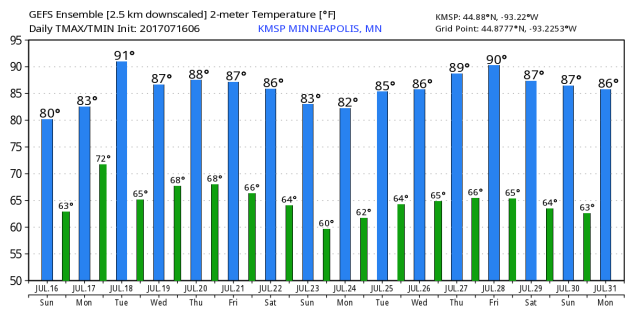
8 to 14 Day Temperature Outlook
According to NOAA's CPC, the extended temperature outlook from July 24rd to July 28th suggests warmer than average temperatures continuing across much of the Upper Midwest as we head into the end of the month. Yes, it could be a pretty warm and sticky rest of the month.
___________________________________________________________
Extended Temperature Outlook
According to NOAA's CPC, the extended temperature outlook through July 28th shows much of the nation will be dealing with above normal temperatures into the second half of the month. The only cooler than average spots maybe located across parts of the Southwestern US due to ongoing monsoonal moisture there, but there may also be some cooler than average temps in the Northern New England States.
Extended Temperature Outlook
Here's the extended 850mb temperature anomaly loop through the end of next weekend. This describes how warm or cold (from average) mid/low level temperatures will be over time. Note that the warmer oranges and reds across much of the nation, which means that warmer surfaces temperatures will likely be found in those areas. Interestingly, it appears that these warmer than average temperatures look to dominate much of the nation through much of that time period.
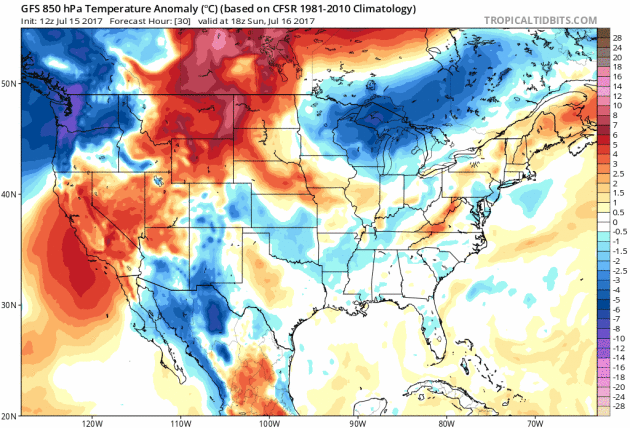
Weather Outlook This Week
The weather outlook over the next couple of days shows stormy weather continuing across parts of the Southern and Eastern US. Some of the storms in these areas could be strong to severe with locally heavy rains. There could also be a few strong storms in the Southwest with locally heavy rain, but heavy rain also looks to be possible in the Upper Midwest.

5 Day Precipitation Outlook
According to NOAA's WPC, the next several days could produce areas of locally heavy rainfall across parts of the Southern U.S. and especially across the Eastern Carolinas and Florida. However, areas of heavy rain will also be found in the Southwest due to monsoon storms and across the Midwest with some 3"+ tallies possible there.
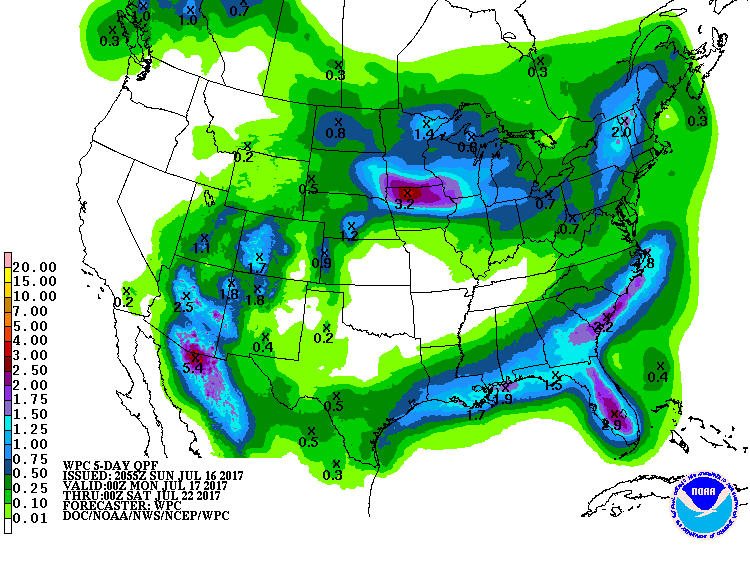 ___________________________________________________________________
___________________________________________________________________
"This Is How Climate Change Will Shift the World’s Cities"
"Summers around the world are already warmer than they used to be, and they’re going to get dramatically hotter by century’s end if carbon pollution continues to rise. That problem will be felt most acutely in cities. The world’s rapidly growing population coupled with the urban heat island effect — which can make cities up to 14°F (7.8°C) warmer than their leafy, rural counterparts — add up to a recipe for dangerous and potentially deadly heat. Currently, about 54 percent of the world’s population lives in cities, and by 2050 the urban population is expected to grow by 2.5 billion people. As those cities get hotter, weather patterns may shift and make extreme heat even more common. That will in turn threaten public health and the economy."
__________________________________________________________________
"The Sun Might Be an 'Ordinary' Star After All"
"Is our sun fundamentally different from other "sun-like" stars? This question highlights an ongoing controversy about whether our nearest star is unique or, in fact, an "ordinary star." Now, an international collaboration of solar physicists thinks it has an answer. Although the sun is very special to Earth and all of the planets in the solar system, it isn't unique; indeed, it is driven by the same internal mechanisms as other stars, the researchers said in a statement highlighting the findings of a new study. In the study, which will be published in the July 14 edition of the journal Science but was released online today (July 13), a group of researchers led by Antoine Strugarek, of the University of Montreal, examined the driving mechanisms behind the solar cycle. Over an average period of 11 years, the sun waxes and wanes between intense magnetic activity followed by extended periods of magnetic calm. At peak activity, the sun becomes covered in sunspots — a sign that its magnetic field is stressed"
(New research suggests the sun is driven by the same mechanism as other sun-like stars, even though it has an unusual cycle. Credit: NASA/Goddard Space Flight Center)
__________________________________________________________________________
"House spending bill increases NASA planetary science, cuts NOAA weather satellite program"
"A fiscal year 2018 spending bill that will be marked up by the House Appropriations Committee July 13 includes record funding levels for NASA’s planetary science program, but severely cuts a NOAA weather satellite program. The committee released July 12 the report accompanying the commerce, justice and science (CJS) appropriations bill, which its CJS subcommittee approved on a voice vote June 29. At that time, the committee had released only a draft of the bill, with limited details about how the nearly $19.9 billion provided to NASA would be allocated."
(The House bill includes funding for a Europa lander mission, which was not funded in the administration's request. Credit: NASA/JPL-Caltech)
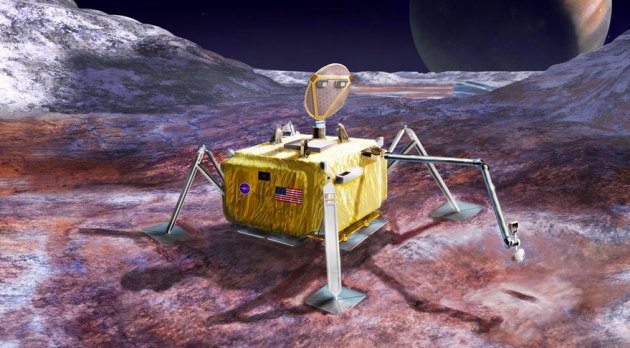
_____________________________________________________________
"SpaceX and NASA will unite forces to colonize Mars"
"Elon Musk is helping NASA to put Americans on Mars. The agency has been planning to return to the moon and to put men on the red planet, but they are not sure when it is going to happen. Musk created SpaceX to revolutionize space travels. For many, getting to Mars and populate it might sound like a crazy idea taken from a futuristic science fiction movie, but these are Musk’s ambitions."
(SpaceX was created by Elon Musk in 2002. Image credit: NASA)

_______________________________________________________________
"Polar bears hurt by climate change are more likely to turn to a new food source — humans"
"More than any other animal, polar bears have become the poster cub for climate change. Al Gore used a cartoon of an exhausted, endlessly swimming polar bear to illustrate the impact humans were having on the sea ice where the bears once hunted. Coca-Cola raised $2 million for arctic polar bears and decorated the website for the habitat preservation campaign with an adorable picture of a cub. And agency after agency has warned that climate change could make polar bears extinct by 2050. But a group of scientists has posited another potential impact of global warming on polar bears, and it’s not nearly so adorable. It involves you being lunch."
(Polar bears hunt marine mammals from the sea ice, but what will happen when the ice is gone? (Mario Hoppmann/European Geosciences Union via Agence France-Presse))
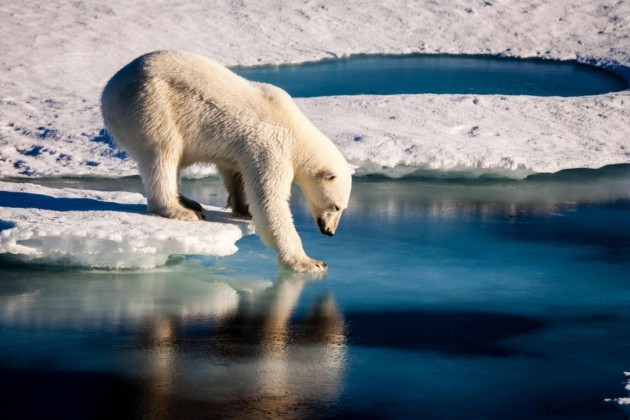
"Climate change to have devastating effect in Asia: Study"
"Climate change would bring devastating consequences to countries in the Pacific and Asia, a new report has warned and said Southern India may witness a decline in rice yields by five per cent in 2030s. Unabated climate change could severely affect the future growth of these countries, reverse current development gains, and degrade quality of life, the report by the Asian Development Bank (ADB) and the Potsdam Institute for Climate Impact Research (PIK) claimed. According to the report, Asia has the highest number of people exposed to flooding from possible storm surge events, particularly in the People's Republic of China (PRC), India, Bangladesh, and Indonesia. It said meanwhile, 130 million people in low-elevation coastal zones in Bangladesh, India, and Pakistan, are at risk of being displaced by the end of the century in worst-case scenarios. "While rice yields could potentially increase in the northern states of India, rice yields may decline by 5 per cent in the 2030s, 14.5 per cent in the 2050s and 17 per cent in the 2080s in the southern states," it said."
(Image Credit: NOAA)
"Climate Change Could Make The Earth "Practically Ungovernable""
Former NASA climate chief James Hansen believes climate change's most dangerous effect will be a continuous rise in sea levels and not necessarily the increase in temperatures. Because so many people live in coastal cities, the mass migrations inland that will follow this rise could leave the world in ungovernable chaos. Simply fixating on the potential negative effects of climate change instead of focusing on efforts to combat it will not help our planet. However, climate change predictions are the reason these efforts matter, and they provide valuable insights as to how we should take action. According to former NASA climate research head James Hansen, the effect of climate change we should be most focussed on isn't the warming of the atmosphere. It's the rising sea levels."
See more from ScienceAlert HERE:
(Image Credit: Holgi/Pixabay via ScienceAlert)

____________________________________________________________________"What is the relationship between migration and climate-change risk?"
"According to the United Nations Population Fund, there are some 244 million international migrants in the world today — with more of them leaving their homes as refugees than at any time since World War II. Now, thanks to a new study, we have a better picture of how migration affects people’s exposure to climate change risk, a relationship that merits closer attention by policy-makers worldwide. Published in the Journal of Sustainability, “Climate Vulnerability and Human Migration in Global Perspective” is the first global-scale analysis of the association between migration and people’s vulnerability to the impacts of climate change. Climate vulnerability increases with people’s inability to cope with extreme weather events, which can affect infrastructure and the availability of ecosystem services, creating socioeconomic and geopolitical pressures. These factors, in turn, can influence people’s mobility."
See more from the University of Minnesota HERE:
(Image Credit: UofM)
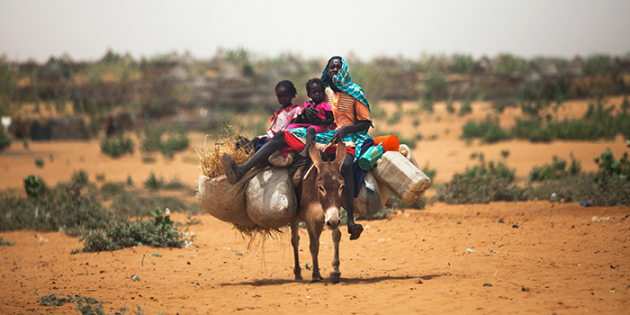
_________________________________________________________________
See more from ScienceAlert HERE:
(Image Credit: Holgi/Pixabay via ScienceAlert)

____________________________________________________________________"What is the relationship between migration and climate-change risk?"
"According to the United Nations Population Fund, there are some 244 million international migrants in the world today — with more of them leaving their homes as refugees than at any time since World War II. Now, thanks to a new study, we have a better picture of how migration affects people’s exposure to climate change risk, a relationship that merits closer attention by policy-makers worldwide. Published in the Journal of Sustainability, “Climate Vulnerability and Human Migration in Global Perspective” is the first global-scale analysis of the association between migration and people’s vulnerability to the impacts of climate change. Climate vulnerability increases with people’s inability to cope with extreme weather events, which can affect infrastructure and the availability of ecosystem services, creating socioeconomic and geopolitical pressures. These factors, in turn, can influence people’s mobility."
See more from the University of Minnesota HERE:
(Image Credit: UofM)

_________________________________________________________________
Thanks for checking in and don't forget to follow me on Twitter @TNelsonWX

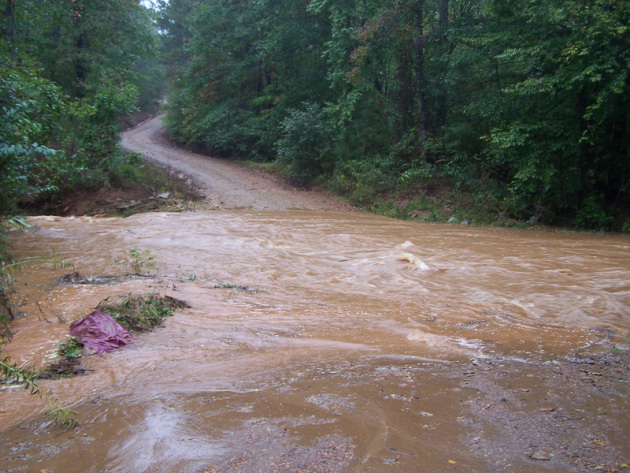
No comments:
Post a Comment